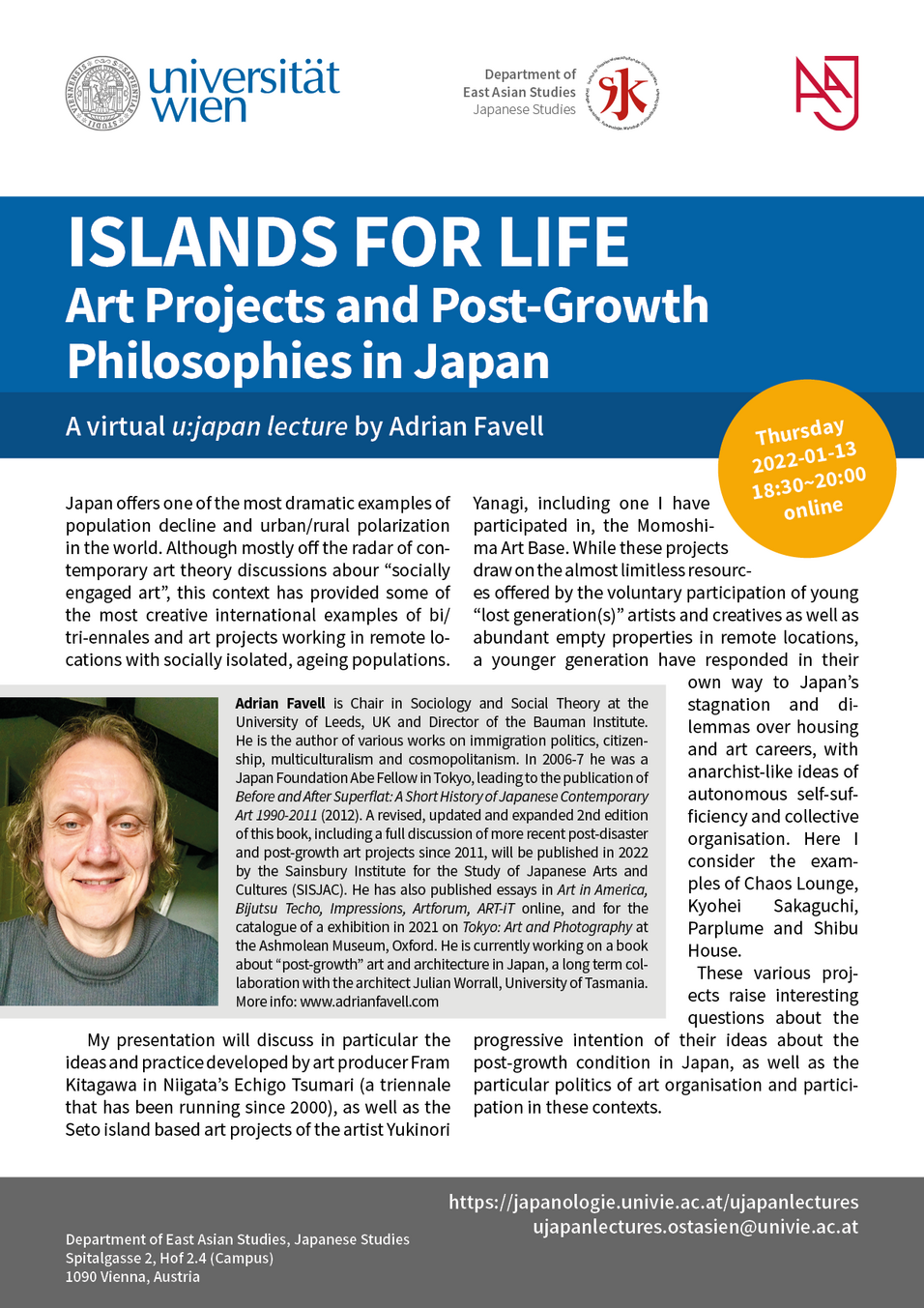| Abstract |
Japan offers one of the most dramatic examples of population decline and urban/rural polarization in the world. Although mostly off the radar of contemporary art theory discussions abour "socially engaged art", this context has provided some of the most creative international examples of bi/tri-ennales and art projects working in remote locations with socially isolated, ageing populations. My presentation will discuss in particular the ideas and practice developed by art producer Fram Kitagawa in Niigata's Echigo Tsumari (a triennale that has been running since 2000), as well as the Seto island based art projects of the artist Yukinori Yanagi, including one I have participated in, the Momoshima Art Base. While these projects draw on the almost limitless resources offered by the voluntary participation of young "lost generation(s)" artists and creatives as well as abundant empty properties in remote locations, a younger generation have responded in their own way to Japan's stagnation and dilemmas over housing and art careers, with anarchist-like ideas of autonomous self-sufficiency and collective organisation. Here I consider the examples of Chaos Lounge, Kyohei Sakaguchi, Parplume and Shibu House. These various projects raise interesting questions about the progressive intention of their ideas about the post-growth condition in Japan, as well as the particular politics of art organisation and participation in these contexts.
RECOMMENDED READING: "Echigo-Tsumari and the art of the possible: the Fram Kitagawa philosophy in theory and practice", in Fram Kitagawa, Lynne Breslin, Adrian Favell et al, Art Place Japan: The Echigo-Tsumari Triennial. Reconnecting Art and Nature. New York: Princeton Architectural Press, pp.142-173. [Download]
| Bio |
Adrian Favell is Chair in Sociology and Social Theory at the University of Leeds, UK and Director of the Bauman Institute. He is the author of various works on immigration politics, citizenship, multiculturalism and cosmopolitanism. In 2006-7 he was a Japan Foundation Abe Fellow in Tokyo, leading to the publication of Before and After Superflat: A Short History of Japanese Contemporary Art 1990-2011 (2012). A revised, updated and expanded 2nd edition of this book, including a full discussion of more recent post-disaster and post-growth art projects since 2011, will be published in 2022 by the Sainsbury Institute for the Study of Japanese Arts and Cultures (SISJAC). He has also published essays in Art in America, Bijutsu Techo, Impressions, Artforum, ART-iT online, and for the catalogue of a exhibition in 2021 on Tokyo: Art and Photography at the Ashmolean Museum, Oxford. He is currently working on a book about "post-growth" art and architecture in Japan, a long term collaboration with the architect Julian Worrall, University of Tasmania. More info: www.adrianfavell.com
| Date & Time |
u:japan lecture | s03e11
Thursday 2022-01-13, 18:30~20:00 CET
max. 300 participants
| Plattform & Link |
https://univienna.zoom.us/j/97212289238?pwd=bitHemxnRFdOVTBLMVNRQ3JDbXQvdz09
Meeting-ID: 972 1228 9238 | PW: 095909
Instructions and Netiquette (in English and German)
How to join a lecture via Zoom Meeting (in English)
Frequently Asked Questions (in English)
| Further Questions? |
Please contact ujapanlectures.ostasien@univie.ac.at
or visit https://japanologie.univie.ac.at/ujapanlectures/s03#e11


